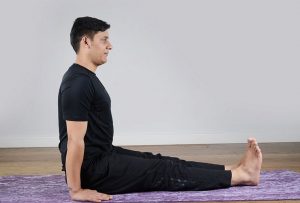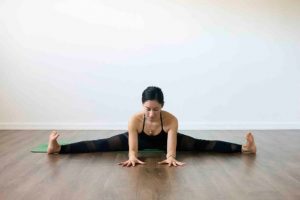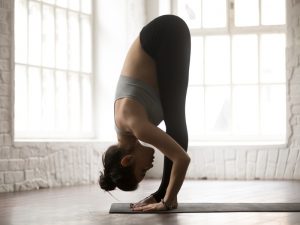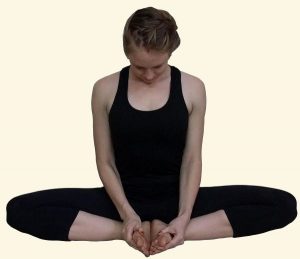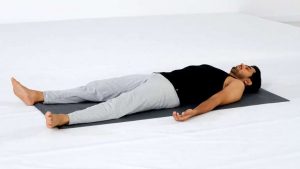ASTHMA – YOGA ASANAS
- December 14, 2022
- Posted by Dr. Vaidya Karanvir Singh
- 0 Comment(s)
Yoga is helpful in increasing breath and body awareness, promote calm, relieve stress and slow down respiratory rate . All the above mention benefits are good for asthma patients.
As yoga is performed at slow pace, it not only provide relieve from symptoms but also make lungs healthy and strong. The key is to find a practice accessible that don’t cause anxiety.
Table of Contents
WHAT IS ASTHMA ?
Narrowing of air passage due to inflammation and swelling thus producing excess mucus that make breathing difficult and triggers cough . This disease is minor for some patients but for other it can life-threatening.
Asthma is a Chronic condition but can be controlled with proper management.
WHAT ARE THE CAUSES OF ASTHMA ?
Asthma is common in children but many patient don’t develop it until they are adults. There is no specific cause of asthma but certain factors contributes its development. The factors are :
- ALLERGIES: Being allergic can put a person at risk of developing Asthma.
- ENVIORNMENTAL FACTORS : Exposure to airway irritants like toxins, fumes ,passive smoke etc.
- GENETICS : Family history of asthma or other respiratory disease can put a person at risk of developing asthma.
- RESPIRATORY INFECTIONS : Certain respiratory infections can damage lungs leading to development of asthma.
COMMON TRIGGERS FOR ASTHMA ATTACK :
Triggers differ from person to person . Some of the common trigger factors are :
- Dust mites
- Air pollution
- Exercise
- Molds
- Pests
- Pets
- Strong chemical or perfume fumes
- Tobacco smoking
- Extreme weather conditions
- Certain medications
- Stress and strong emotions
- GRED (Gastro esophageal reflux disease )
WHAT ARE THE SYMPTOMS OF ASTHMA ?
Some common symptoms of asthma are :
- Wheezing
- Coughing especially when laugh, during exercise or at night.
- Tightness in chest
- Shortness of breath
- Fatigue
- Chest pain
- Rapid breathing and difficulty in talking
- Troubled Sleeping
AYURVEDIC APPROACH :
As per ayurveda asthma can be correlated to Tamak shwasa.
Due to nidan sevan like intake heavy, dry ,unwholesome food , cold climate etc there is aggravation of kapha which cause obstruction of pranvaha strotas. Obstruction of pranvaha strotas cause reverse movement of vata . Vata dosha increases dryness and cause difficulty in breathing.
HERBS :
- Vasa
- Sunthi
- Black pepper
- Pippli
- Tulsi
- Nagkeshar
- Kantakari
YOGA ASANAS :
- DANDASANA ( STAFF POSE ): This pose helps to stretch chest and improve posture. It strengthens core and back muscles. Known to treat asthma.
STEPS :
- Sit down with legs stretched in front of you and hands at your sides. Feet pointed upwards.
- Stretch the spine comfortably and relax your legs while pressing the body firmly on floor.
- Take deep breaths and hold the pose for 20-30 seconds.
- Slowly relax and repeat 5-6 times.
PRECAUTIONS :
Don’t practice in following conditions :
- Arm, wrist or back injury
- High blood pressure
- Severe pain in arms, legs or back.
- Severe fatigue
- Suffering with flu, cold or fever.
2.UPAVISTHA KONASANA ( SEATED WIDE ANGLE POSE ) :This pose opens-up chest and stretches upper body. It improves breathing. Advised to perform on empty stomach or 4 to 6 hours after last meal.
STEPS :
- Sit in Dandasana keeping spine straight and place both arms by sides.
- Once relaxed, start opening your legs wide to make 90 degree angle with your hips.
- Take deep breaths while raising your spine upwards
- Slowly exhale while bending torso forward as much as you feel comfortable and place both palms on floor
- Hold the posture for 30-40 seconds and then slowly release the posture returning to initial position
PRECAUTIONS :
Don’t practice in following conditions :
- Pregnancy
- Lower back ,leg , groin and hip injury
- Pain or discomfort while performing asana.
- UTTANASANA (FORWARD BEND POSE): This pose is a calming pose as it helps to relieve stress . Uttan asana is helpful for asthma patient as it open up lungs.
STEPS :
- Stand straight with legs hip-width apart and both hands at sides.
- Inhale deeply
- Exhale slowly while bending forward from hips .
- Rest both hands on floor next to feet
- Hold the pose for 5-10 seconds.
- Slowly come to initial position .
PRECAUTIONS :
Don’t practice in following conditions :
- Suffering from fever, flu or cold.
- Back, knee, leg or hamstring injury
- Heart disease
- Abdominal hernia
- Sciatica
- BADDHAKONASANA ( BUTTERFLY POSE ) :
This is another relaxing pose . It stretch the body and relieves asthma symptoms .
STEPS :
- Sit down with straight spine and relaxed shoulders.
- Slowly bends your knees and start bringing your feet together so soles of both feet are touching.
- Move the heels toward pelvis as close as your comfortable and hold the toes with both
- Flap your legs like butterfly wings while taking deep breaths.
- Do as many time as you can than relax.
PRECAUTIONS :
Don’t practice in following conditions :
- Knee or groin injury
- Pain in lower back or hips
- Pregnancy
- Spondylitis
- SAVASANA (CORPSE POSE ) :
This asana is recommended for asthma as it helps to relieve stress and anxiety .It is also helpful in regulation of heart rate.
STEPS :
- Lie down on your back with straight legs and arms at sides.
- Keep the body in state of rest then close the eyes slowly and start taking deep breaths .
- Keep your focus on your breaths and relax every part of the body.
- Hold the posture for 5-10 minutes , maintaining slow and steady breaths.
- Slowly start reawakening body by wiggling fingers and toes and gradually return to sitting position
PRECAUTIONS :
Don’t practice in following conditions :
- Pregnancy
- Back injury
- Suffering from cold, flu or fever
- Sever fatigue
- Severe back stiffness or pain

Dr. Vaidya Karanvir Singh is the younger Vaidya in Chandigarh Ayurved & Panchakarma Centre. He is the fourth generation in his family who is practicing as a general consultant in Ayurved & Panchakarma treatment at Chandigarh. In his practice, he had treated more than 1 Lakh Plus patients worldwide.


